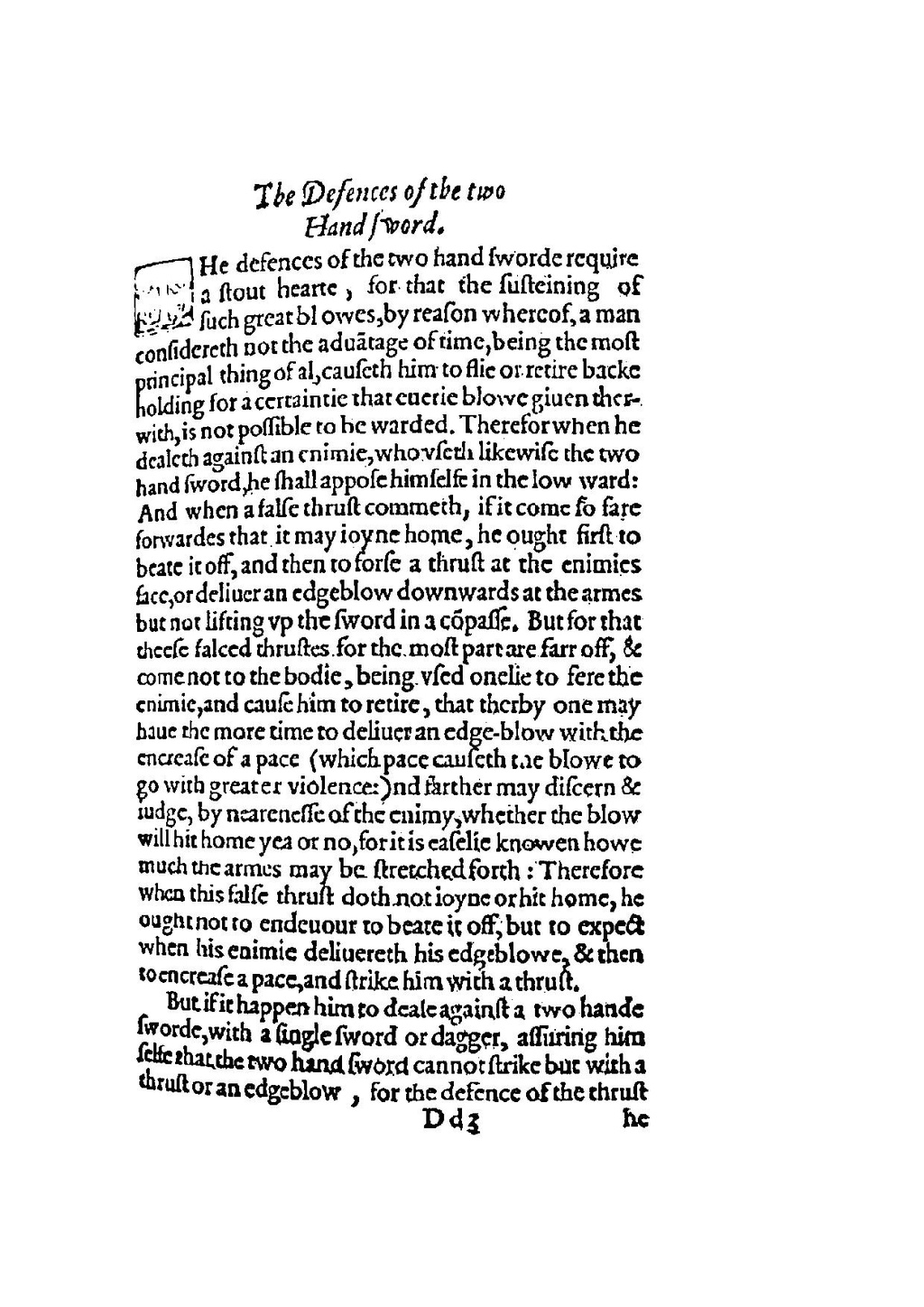The Defences of the two Hand sword.
THe defences of the two hand sworde require a stout hearte, for that the susteining of such great blowes, by reason whereof, a man considereth not the aduātage of time, being the most principal thing of al, causeth him to flie or retire backe holding for a certaintie that euerie blowe giuen therwith, is not possible to be warded. Therefor when he dealeth against an enimie, who vseth likewise the two hand sword, he shall appose himselfe in the low ward: And when a false thrust commeth, if it come so fare forwardes that it may ioyne home, he ought first to beate it off, and then to forse a thrust at the enimies face, or deliuer an edgeblow downwards at the armes but not lifting vp the sword in a cōpasse. But for that theese falced thrustes for the most part are farr off, & come not to the bodie, being vsed onelie to fere the enimie, and cause him to retire, that therby one may haue the more time to deliuer an edge-blow with the encrease of a pace (which pace causeth the blowe to go with greater violence:) nd farther may discern & iudge, by nearenesse of the enimy, whether the blow will hit home yea or no, for it is easelie knowen howe much the armes may be stretched forth: Therefore when this false thrust doth not ioyne or hit home, he ought not to endeuour to beate it off, but to expect when his enimie deliuereth his edgeblowe, & then to encrease a pace, and strike him with a thrust.
But if it happen him to deale against a two hande sworde, with a single sword or dagger, assuring him selfe that the two hand sword cannot strike but with a thrust or an edgeblow, for the defence of the thrust

